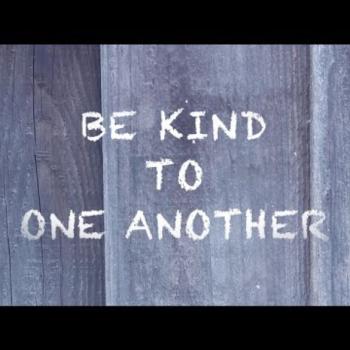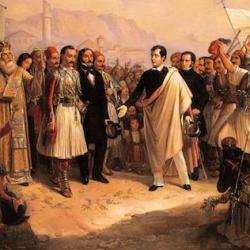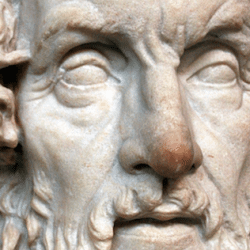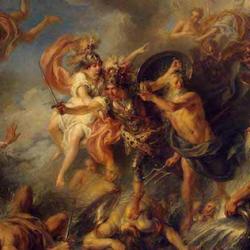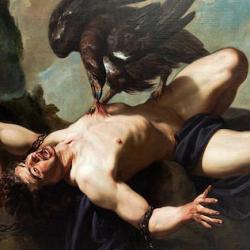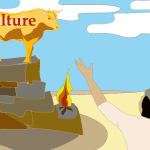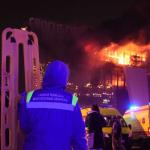Some more thoughts from Segal’s book:
1) He points out the optimism that gripped Athens in the Periclean period, an optimism about the ability of human LOGOS and NOMOS to stave off the savage potential of man’s PHUSIS. But that was short-lived: The Peloponnesian wars broke out, marked by several horrific acts of savagery (detailed by Thucydides), which had an affect on Athenian consciousness not unlike the effect of WW1 on the confidence of European civilization. Intriguingly, Segal points to a shift in the meanings of NOMOS and PHUSIS during the course of the fifth century BC: At the beginning of the century, NOMOS was seen as iberating, a structure that suppressed the savage nature of man and enabled him to live in political community. By the end of the century, in an almost Freudian move, NOMOS is “seen as repressive and destructive” while PHUSIS is liberating. This is the ground on which the Sophists operated, bringing a “natural” critique against the injustices of the “legal” order. Part of the Sophist innovation was to argue that Athenian NOMOI were products of human action, rather than gifts of the gods, and therefore as succeptible to change and deterioration as any human institutions or creations.
2) This is, of course, also the ground on which tragedy staked its claim: “The triumph over the beastlike life of savagery, so proudly celebrated by Sophocles in the Antigone, by Euripides in the Suppliants, by Critias in the Perithous, rings hollow when set against the recrudescence of bestiality and savagery in man’s own nature. To this paradox the tragic poets return again and again.” Euripides, writing in the midst of the shocking events of the war, clearly depicts this dissolution of civilized order into bestiality; Sophocles, at some chronological remove, deals with the issues more subtly, but still explores the power of man to civilize himself.
3) An intriguing historical note: The Parthenon was completed in the year just before the outbreak of the Peloponnesian Wars and the production of Euripides’s Medea . I’m reminded of the fact that the Jews completed Herod’s temple only a few years prior to its decimation by the Romans. In fact, the completion of the temple was the event that filled Jews with the revolutionary fervor that led to the temple’s destruction. I wonder if something similar went on at the completion of the Parthenon?
4) Segal points out that the hero’s relationship to place (and hence his moral “standing”) is ambiguous. Places that should be safe havens become threatening (eg, Agamemnon’s bath). In part, this is because of the ambiguity of the hero’s relationship to the polis. On the one hand, the hero’s energy and physical strength is necessary for the survival of the polis; on the other hand, the hero’s energy is so boundless that he threatens to break the order (NOMOS) of the polis. There is a conflict, in Reinhold Niebuhr’s terms, between the hero’s vitality and the law. The hero has no safe and fixed place, either socially or geographically or politically, and has to make his own character, has to invent himself.
Is this not simply the old Greek problematic of order and chaos being worked out in the practical situations of life and tragic drama? Fixity is good; being is best. But being is static and motionless; the moment it moves it is decaying and dying. There cannot be any creation, any vital action, without breaking up the bliss of being. The argument is familiar from theology: Change is either for the better or for the worse; God cannot get any better; and God cannot get any worse, for then He would cease to be God; therefore, God is changeless. Or, we could transpose the argument into an exploration of the question of movement: Movement is either to a better place or to a worse place; God cannot be in a better place than He is, and it would be unbefitting for Him to take a worse place; therefore God is motionless. Put in that latter way, it is clear that it is flawed. And it seems to be flawed because it assumed the priority of fixity and “being” rather than the priority of harmonious action. It fails to see that, as Barth says it, the life of the Triune God is a story.
In short, I’m sensing that scratching the “metaphysics” behind tragedy brings us right up to theological questions, questions that are insoluble outside a Trinitarian framework.



